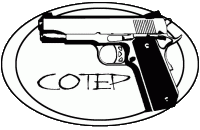
 |
|
| Register | Forums | Blogs | Today's Posts | Search | Donate |
 |
 |
 |
|
#1
|
|||||
|
|||||
|
Here I will post a different firearm, new or old, each day (or at least try).
We will start off with this one. Egyptian Hakim in 8mm Mauser: The Hakim Rifle is a gas operated semi-automatic rifle. It was originally designed by Sweden and produced as the AG-42 Ljungman for the Swedish Army. The tooling and design were later sold to Egypt, and the Hakim was produced there during the 1950s and early 1960s. It was replaced in the mid-1960s by the Maadi AK-47 (a licensed copy of the Soviet rifle) but was stored in military reserve arsenals. In more recent years, it has been observed in use by some Egyptian police units. Around 70,000 were made       Sent from my iPhone using Tapatalk
__________________
**I have been Enlightened** |
|
#2
|
|||||
|
|||||
|
A fine rifle if you can find one in good shape.
__________________
There are no dangerous weapons; there are only dangerous men. To speak without thinking is to shoot without aiming. |
|
#3
|
|||||
|
|||||
|
My grandfather has had one for a while. I always remember the triangular upper receiver was different than the others on the wall.
__________________
CBOB0746 NRA Life Member Florida CWL Since 1992 |
|
#4
|
|||||
|
|||||
|
Today's firearm of the day is.....
The Browning Hi Power: The Browning Hi Power is a single-action, semi-automatic handgun available in 9mm and .40 S&W calibers. It is based on a design by American firearms inventor John Browning, and completed by Dieudonné Saive at Fabrique Nationale (FN) of Herstal, Belgium. Browning died in 1926, several years before the design was finalized. The Hi-Power is one of the most widely used military pistols in history, having been used by the armed forces of over 50 countries. The Hi Power name alludes to the 13-round magazine capacity, almost twice that of contemporary designs such as the Luger or Colt M1911. The pistol is often referred to as an HP (for "Hi-Power" or "High-Power"), GP (for the French term, "Grande Puissance") or BHP (Browning High-Power). The terms P-35 and HP-35 are also used, based on the introduction of the pistol in 1935. It is most often called the "Hi Power", even in Belgium.        Sent from my iPhone using Tapatalk
__________________
**I have been Enlightened** Last edited by Caleb; 10-25-2017 at 11:24 AM. |
|
#5
|
|||||
|
|||||
|
For the collector set, ones that were made under German occupation can be marked P640(b) along with the German acceptance stamps.
__________________
There are no dangerous weapons; there are only dangerous men. To speak without thinking is to shoot without aiming. |
|
#7
|
|||||
|
|||||
|
I will own a HP soon enough. Love the looks and ergos of the HP. Thx for posting!
__________________
Pedro U / Member# 0770 
|
|
#8
|
|||||
|
|||||
|
I know there are two pistols that have an exemption from the Short Barrel Rifle designation when a stock is attached to it. I am pretty sure the first one is the Luger. The other is either the Broomhandle or the High Power. Anyone know?
__________________
CBOB0746 NRA Life Member Florida CWL Since 1992 |
|
#9
|
|||||
|
|||||
|
Gave mine to my son. Outstanding firearm.
__________________
Joe O'Rourke Joseph C. O'Rourke, Major, USAR (Retired) COTEP # CBOB0480 NRA Member :stand: |
|
#10
|
|||||
|
|||||
|
Yes BUT, the stock must match the serial number of the firearm. If it does not, it will need to be sbr'd. You can't just buy a stock online, even if it is period correct, and put it on your pistol. The Hi Power and the Luger I believe are the two pistols, Mike V will most likely know though.
__________________
**I have been Enlightened** |